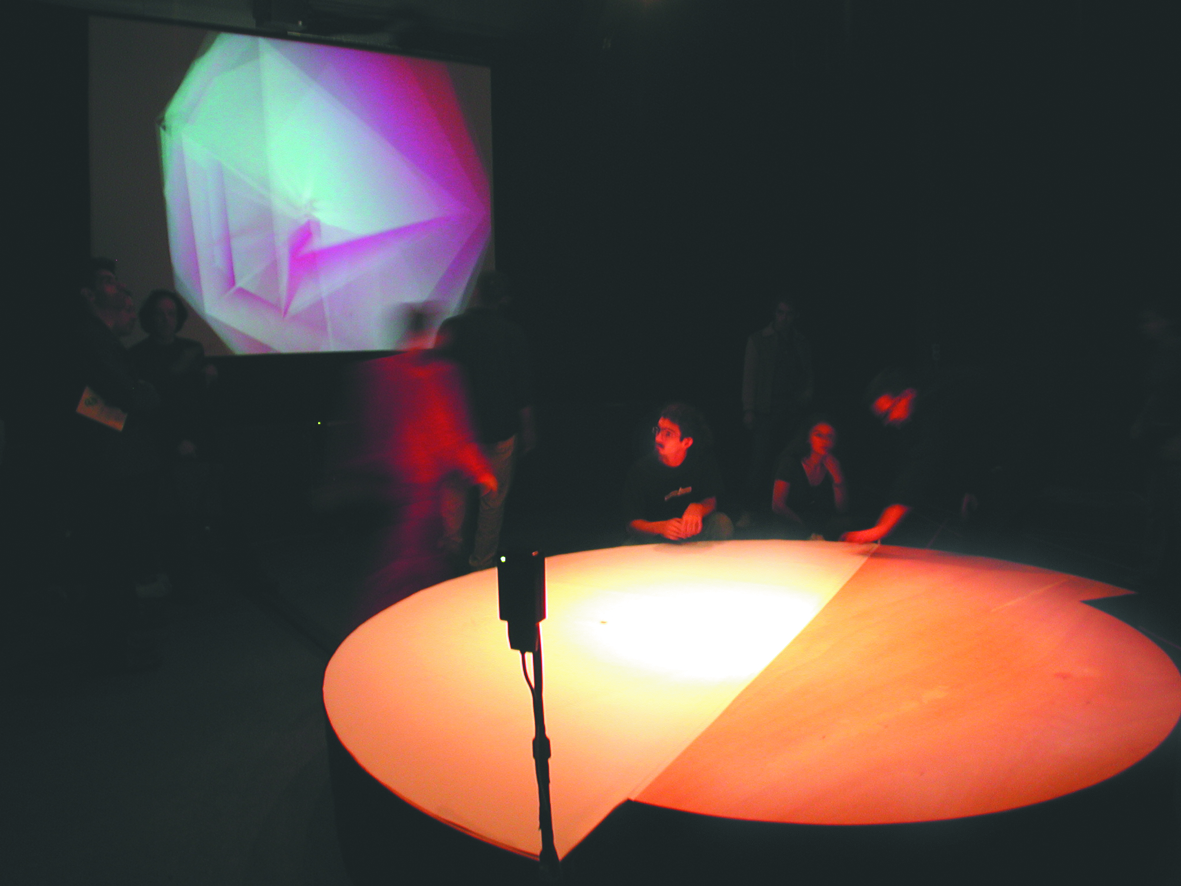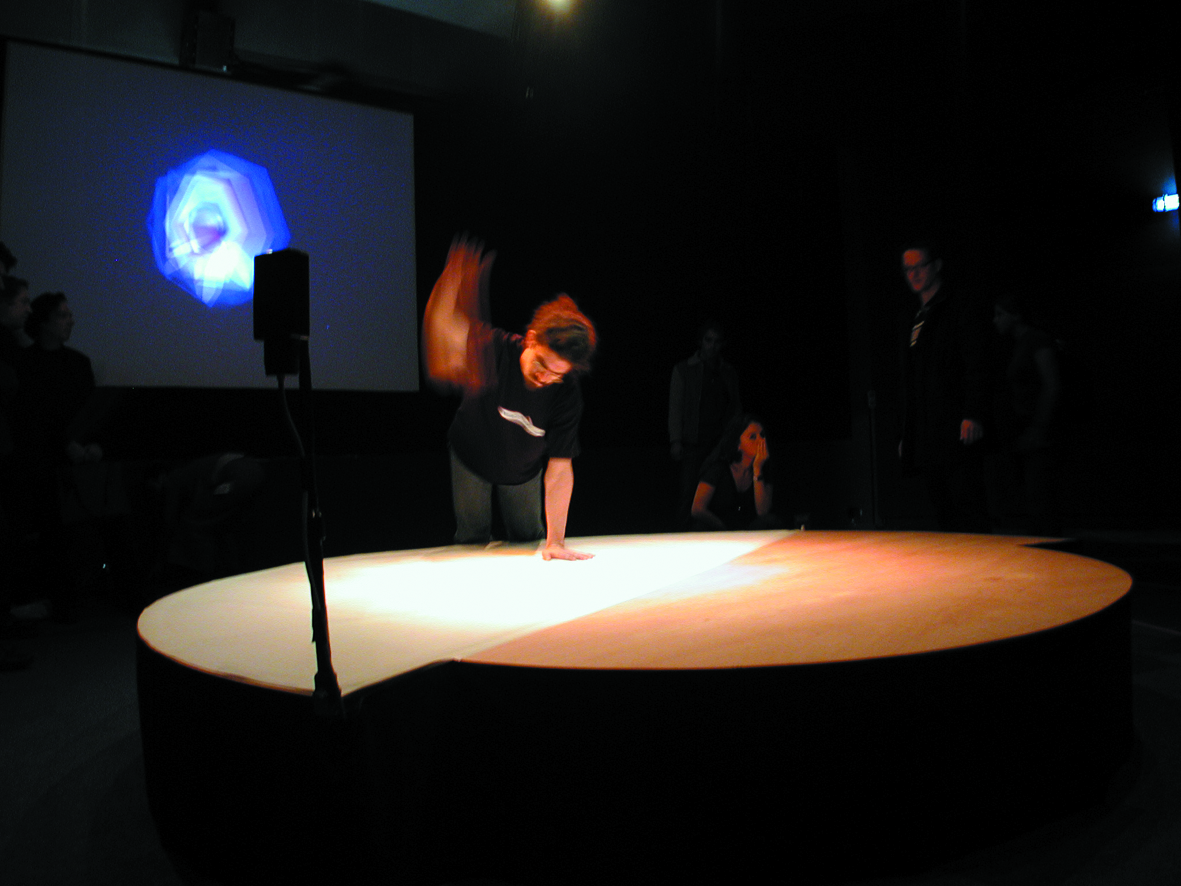LA VILLETTE NUMERIQUE 2002, Paris
DIGIT@RT - Cité des Sciences et de l’Industrie
The aim of DIGIT@RT is to bring current trends in digital culture to the attention of a wide audience, as they affect the worlds of artistic education, creation and research. Created with the artistic advice of Jean-Louis Boissier (professor at Paris VIII), DIGIT@RT aims to examine the very notion of digital art in the light of the most recent productions.
Does digital art create new artistic mediums and genres? What common specificity can we find in this abundant and heterogeneous production? We should probably be looking for common tools, and even more so, common languages and procedures. The power of digital technology has made it possible to envisage unprecedented formal constructions and behaviours. At once a principle of classification, storage and a communication machine, digital technology links its artistic uses to a whole range of cultural, social, scientific and industrial practices.
As a result, it is unclear whether so many experiments and prototypes belong to the realm of art. It is neither urgent nor essential to answer this question.
The DIGIT@RT exhibition therefore focuses on works and creations that explore interactivity through the concepts of "playability", "aesthetics of relationship" and "variability". It also favours works in progress rather than completed or canonised works. Finally, it promotes an aesthetic, scientific and technical understanding of digital art research, projects and works, using appropriate educational and critical tools.
The exhibition is organised around six current trends in digital creation.
Musical environnement, Cité des Sciences et de l'Industrie - Explora - Mezzanine septembre 24-29, from 10AM to 6PM
Cyberculture was born out of music. Today, however, the image is following a path parallel to that of sound, while hybridisations between sound and image are multiplying. This space shows how digital technology can be used to create sound environments, with or without the integration of visual environments. It presents research and creations by artists working on the interactivity between the spectator and a musical composition.
This space has been designed in collaboration with the CICM (Centre de Recherche en Informatique et Création Musicale de l'Université de Paris VIII) around the installation and performances of the "Pavillon Espaces Sonores" by Anne Sedes, Bruno Rastoin and Todor Todoroff.
The "Pavillon Espaces Sonores" installation Anne Sedes, Todor Todoroff, Bruno Rastouin, CICM (Centre de Recherche en Informatique et Création Musicale de l'Université de Paris VIII).A convivial cylindrical space, with sound and vision, hosting a variety of creations and interactive sound installations. It invites the public to pay attention to sound, made sensitive by the gesture of the instrumentalist, the dancer and the visitor, or by their own presence in the space. The sound and visual immersion for around thirty participants in the world of musical interpretations is made interactive through a device made up of 4 ultrasound interfaces, positioning four invisible beams in the public space, highlighted only by a few strokes of light, thus activating a device for digital audio transformation in real time. An audiovisual tribute to Diatope by Iannis Xenakis, a pioneer in the search for a synthesis of the arts of sound and image. Daily interactive performances will feature works by young CICM artists and researchers. With the participation of cellist Aurélie Monbet, percussionist Miquel Bernat, clarinettist Ivàn Solano, choreographer Laurence Marthouret and others.


